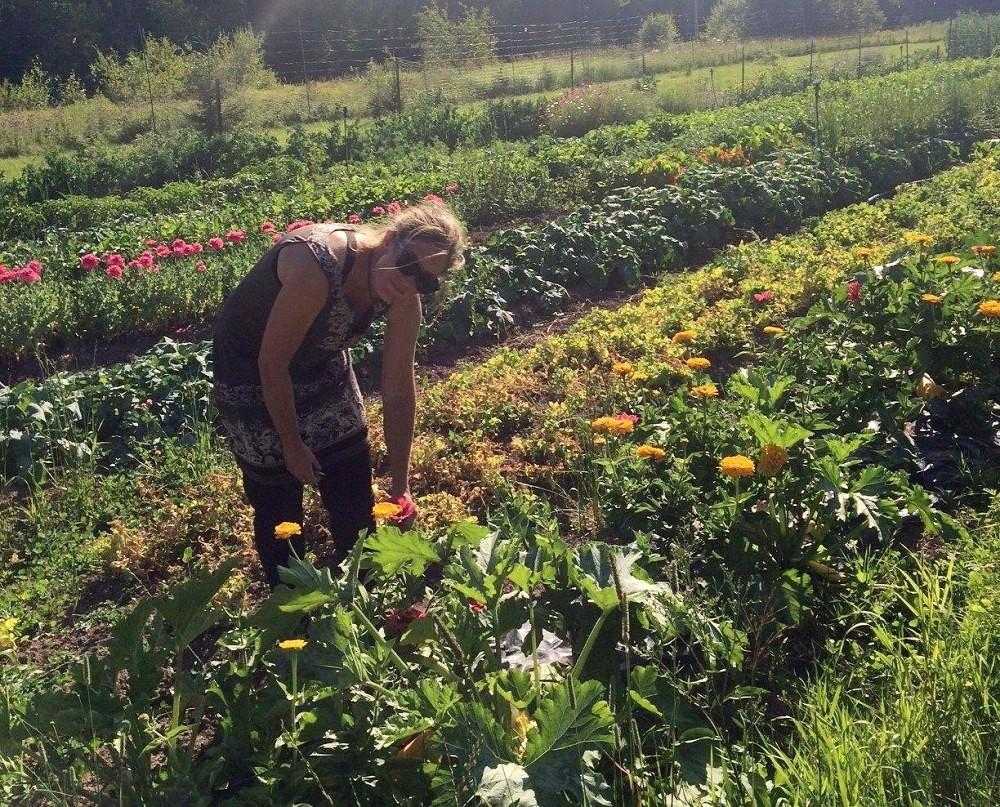Meet Our Farmers: Root Cellar Gardens
by Katherine Mayer
 Evalisa McIllfaterick of Root Cellar Gardens uses traditional, organic and ecologically-minded practices in her everyday farming. With her goal of having items available all year round, McIllfaterick knows a thing or two about growing fresh, local produce. You can find Root Cellar Gardens at the Thunder Bay Country Market (Wednesdays and Saturdays) and the Thunder Bay Regional Health Sciences Centre Fresh Market (Wednesdays).
Evalisa McIllfaterick of Root Cellar Gardens uses traditional, organic and ecologically-minded practices in her everyday farming. With her goal of having items available all year round, McIllfaterick knows a thing or two about growing fresh, local produce. You can find Root Cellar Gardens at the Thunder Bay Country Market (Wednesdays and Saturdays) and the Thunder Bay Regional Health Sciences Centre Fresh Market (Wednesdays).Accessing fresh produce all year round may seem like a bit of a stretch in Northwestern Ontario, but not for Evalisa McIllfaterick from Root Cellar Gardens. Her goal of having fresh produce available throughout the winter months is starting to become a reality. The small-scale, off-grid, market garden uses organic, ecologically-minded practices, which are similar to other growers in the area.
The vision of Root Cellar Gardens is to make local produce is available year round. “The focus in the gardens is on root crops, especially parsnips and rutabagas since they hold well in the winter months when things aren’t growing. During the summer months, shelling and snap peas are in abundance and a wide variety of other items are available seasonally such as tomatoes, radishes, and cucumbers,” explained McIllfaterick. The food production doesn’t end here, as seeds are also grown out for the purpose of seed production. “When we talk of food security, seeds are often forgotten – however, without seeds to plant, food can’t be grown,” explains McIllfaterick.
As the local food movement continues to grow in Thunder Bay, many farmers, including McIllfaterick, hope to create a sustainable food system that contributes to the health of our city. “I am continually amazed and appreciative of the efforts customers make to buy local produce. I find that super motivating and encouraging as a farmer in this community,” said McIllfaterick.
If interested in storing vegetables throughout the cold months, McIllfaterick offers some tips for winter storage. “You must consider temperature and humidity when storing vegetables for the winter season. Garlic and onions, for example, don’t mind being in warmer temperatures, as long as the air is dry. Conversely, rutabagas want to be cool and definitely don’t want to dry out,” said McIllfaterick.
For those without a green-thumb, but who want local produce in the winter months, Root Cellar Gardens and Mile Hill Farm, a local farm that works closely with McIllfaterick, have some solutions. Together, both farmers offer Winter Community Supported Agriculture (CSA) boxes to the public. They are delivered bi-monthly to customers and include a variety of times. Another other option for getting winter vegetables is to make one bulk order for the season from the online order form. Both options can be done through Root Cellar Gardens’ or Mile Hill Farms’ websites (www.rootcellargardens.com or www.milehillfams.ca).
You can find McIllfaterick and Root Cellar Gardens selling items at local markets, including the Thunder Bay Regional Health Sciences Centre’s Fresh Market, open to the public, on Wednesdays from 11:30 am to 1:30 pm in the Cafeteria Courtyard. This market is an extra location in addition to their regular attendance at the Thunder Bay Country Market on Wednesday evenings and Saturday mornings.
For more information about Root Cellar Gardens, you can visit McIllfaterick’s website or check out her Facebook page, ‘Root Cellar Gardens’.
Pasta with Marina di Chioggia (or other) Squash Cream Sauce
- Approx. 2kg Marina di Chioggia Squash (other smooth textured squash like butternut or honeyboat)
- 1 large onion, diced small
- 2 Tbsp butter
- 1 tsp salt
- 1 clove garlic, minced
- 2 tsp minced fresh rosemary (or ½ tsp dried)
- 1-2 cups heavy cream
– If you have time, start by roasting the squash (cut in large chunks, seeded, laid out on cookie sheet) at 350F until soft (about 45 minutes).
– If you are in a rush, you can also peel the squash using a vegetable peeler, cut it in half, scoop out the seeds, and dice it. You can then boil the diced squash until soft, which will only take about 15 minutes, but isn’t quite as delicious or nutritious.
– Once the squash is cooked, put the pasta water on to boil, and sauté the onion and garlic in butter until translucent (about 5-10 minutes). Add cooked squash, salt, and rosemary. Continue sautéing, stirring regularly for a few minutes.
– Cook your pasta as per your usual system (your water should be boiling around now). While the pasta cooks, blend the squash/onion etc. until smooth.
– Return it to the saucepan, add the cream until it’s a consistency you like, and heat on low until the pasta is cooked.
– Ladle sauce over pasta, and serve with fresh ground pepper and grated parmesan cheese.